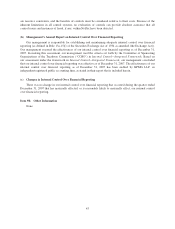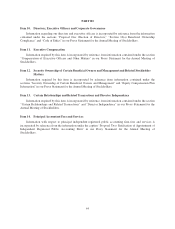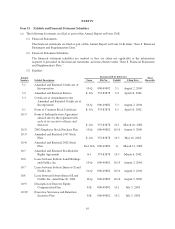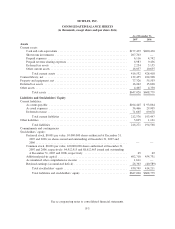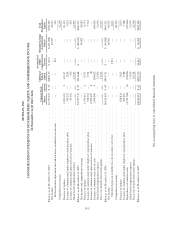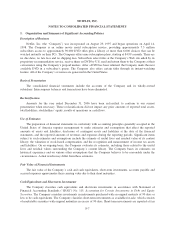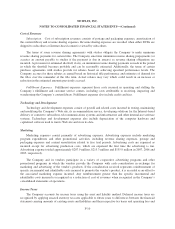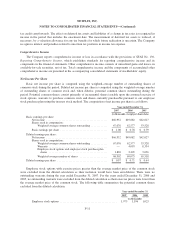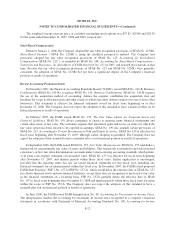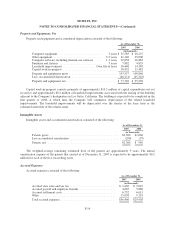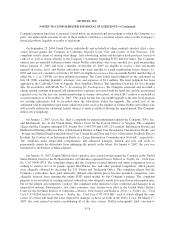NetFlix 2007 Annual Report Download - page 58
Download and view the complete annual report
Please find page 58 of the 2007 NetFlix annual report below. You can navigate through the pages in the report by either clicking on the pages listed below, or by using the keyword search tool below to find specific information within the annual report.NETFLIX, INC.
NOTES TO CONSOLIDATED FINANCIAL STATEMENTS
1. Organization and Summary of Significant Accounting Policies
Description of Business
Netflix, Inc. (the “Company”) was incorporated on August 29, 1997 and began operations on April 14,
1998. The Company is an online movie rental subscription service, providing approximately 7.5 million
subscribers access to approximately 90,000 DVD titles plus a library of more than 6,000 choices that can be
watched instantly on their PCs. The Company offers nine subscription plans, starting at $4.99 a month. There are
no due dates, no late fees and no shipping fees. Subscribers select titles at the Company’s Web site aided by its
proprietary recommendation service, receive them on DVD by U.S. mail and return them to the Company at their
convenience using the Company’s prepaid mailers. After a DVD has been returned, the Company mails the next
available DVD in a subscriber’s queue. The Company also offers certain titles through its instant-watching
feature. All of the Company’s revenues are generated in the United States.
Basis of Presentation
The consolidated financial statements include the accounts of the Company and its wholly-owned
subsidiary. Intercompany balances and transactions have been eliminated.
Reclassification
Amounts for the year ended December 31, 2006 have been reclassified to conform to our current
presentation when necessary. These reclassifications did not impact any prior amounts of reported total assets,
total liabilities, stockholders’ equity, results of operations or cash flows.
Use of Estimates
The preparation of financial statements in conformity with accounting principles generally accepted in the
United States of America requires management to make estimates and assumptions that affect the reported
amounts of assets and liabilities, disclosure of contingent assets and liabilities at the date of the financial
statements, and the reported amounts of revenues and expenses during the reporting periods. Significant items
subject to such estimates and assumptions include the estimate of useful lives and residual value of its content
library; the valuation of stock-based compensation; and the recognition and measurement of income tax assets
and liabilities. On an ongoing basis, the Company evaluates its estimates, including those related to the useful
lives and residual values surrounding the Company’s content library. The Company bases its estimates on
historical experience and on various other assumptions that the Company believes to be reasonable under the
circumstances. Actual results may differ from these estimates.
Fair Value of Financial Instruments
The fair value of the Company’s cash and cash equivalents, short-term investments, accounts payable and
accrued expenses approximates their carrying value due to their short maturities.
Cash Equivalents and Short-term Investments
The Company classifies cash equivalents and short-term investments in accordance with Statement of
Financial Accounting Standards (“SFAS”) No. 115, Accounting for Certain Investments in Debt and Equity
Securities. The Company considers investments in instruments purchased with an original maturity of 90 days or
less to be cash equivalents. The Company classifies short-term investments as available-for-sale, which consists
of marketable securities with original maturities in excess of 90 days. Short-term investments are reported at fair
F-7


